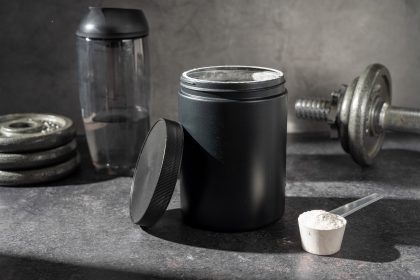Muscular endurance represents one of fitness’s most underappreciated qualities. While many enthusiasts focus on building impressive strength or achieving perfect aesthetics, the ability of muscles to perform repeated contractions over extended periods often gets overlooked. This capability fundamentally changes how your body handles everything from athletic competitions to household chores.
Unlike muscular strength, which measures maximum force output in a single effort, endurance evaluates how long your muscles can sustain activity before fatigue sets in. Consider the difference between a powerlifter who hoists massive weights once versus a marathon runner who maintains a steady pace for hours. Both display impressive muscular abilities but in completely different ways.
The distinction matters tremendously in practical terms. Many people can summon the strength to lift a heavy object once, but lack the endurance to carry moderate loads for extended periods.
This distinction proves relevant not just for serious athletes but for anyone hoping to maintain functional independence throughout life. Research consistently shows that muscular endurance correlates strongly with quality of life measures in aging populations, enabling continued performance of daily activities without excessive fatigue.
Why lasting muscle power transforms your life
Developing superior muscular endurance delivers benefits that extend far beyond the gym walls. The advantages touch nearly every aspect of physical function:
Daily activities become noticeably easier when your muscles resist fatigue. Tasks like carrying groceries, climbing multiple flights of stairs, or playing with children no longer leave you exhausted. This translates to greater energy throughout your day and enhanced ability to maintain an active lifestyle.
Athletic performance improvements appear across virtually all sports and activities. From tennis players maintaining power through five-set matches to hikers tackling challenging trails, endurance allows competitors to maintain technique and performance even as others fade.
Injury prevention represents perhaps the most valuable benefit. Fatigued muscles lose proper form and coordination, dramatically increasing injury risk. By developing greater endurance, your body maintains proper movement patterns and joint stabilization even during extended activity.
Posture enhancement occurs naturally as core and back muscles develop the stamina to maintain proper alignment throughout the day. Many people who struggle with back pain find relief when developing the muscular endurance necessary to maintain correct posture.
Recovery acceleration between workouts happens as your body adapts to handle repeated stress. This means less soreness and quicker returns to normal function after challenging activities.
7 training strategies that build real endurance
Developing impressive muscular endurance requires specific training approaches that differ from traditional strength-building methods. These seven proven strategies create the perfect foundation:
1. Embrace high-repetition training
Traditional strength training typically involves heavy weights for 6-12 repetitions. Endurance training flips this approach by using lighter weights for significantly more repetitions.
For optimal endurance development, select weights that allow 15-25 repetitions per set while maintaining proper form. This challenges muscles to sustain effort over longer periods rather than generating maximum force briefly.
This approach creates the specific muscular adaptations needed for endurance: increased mitochondrial density, enhanced oxygen utilization, and improved waste product clearance within muscle tissue.
2. Decrease rest intervals strategically
Rest periods between sets dramatically impact training outcomes. For endurance enhancement, gradually reduce rest periods to challenge recovery capability.
Begin with standard 90-second rest periods between sets, then systematically decrease to 60, 45, and eventually 30 seconds as conditioning improves. This progressive approach forces muscles to recover while still experiencing fatigue, precisely mimicking real-world endurance demands.
Circuit training, which involves moving directly from one exercise to another with minimal rest, further enhances this effect by maintaining elevated heart rate while alternating muscle groups.
3. Incorporate interval training techniques
Alternating between high and low-intensity periods creates remarkable endurance improvements by challenging different energy systems simultaneously.
Try this simple interval approach: Perform an exercise at moderate intensity for 90 seconds, then immediately shift to high intensity for 30 seconds. Repeat this cycle 6-8 times per exercise.
This method trains muscles to clear metabolic byproducts efficiently while improving oxygen delivery—both critical factors in prolonged performance.
4. Master bodyweight fundamentals
Some of the most effective endurance exercises require no equipment at all. Bodyweight movements offer perfect resistance while simultaneously engaging stabilizing muscles.
These four bodyweight exercises form the foundation of endurance training:
Push-ups build remarkable endurance throughout the chest, shoulders, and triceps. Begin in high plank position with hands slightly wider than shoulders, then lower until elbows reach 90 degrees before pushing back up. For beginners, modified versions with knees on the floor provide an accessible starting point.
Wall sits create tremendous endurance in the quadriceps, glutes, and calves. Stand with your back against a wall, then slide down until thighs are parallel to the floor. Hold this position, gradually working up from 30 seconds to several minutes.
Plank holds develop core endurance essential for all movements. Support your body weight on forearms and toes while maintaining a straight line from head to heels. Start with 30-second holds and progress toward 2-3 minutes.
Mountain climbers combine cardiovascular conditioning with muscular endurance. From a push-up position, rapidly alternate bringing knees toward chest as if running in place. This exercise particularly challenges the core while elevating heart rate.
5. Prioritize compound movements
Exercises that engage multiple muscle groups simultaneously create the most functional endurance improvements. These movements mimic real-world activities while efficiently training several muscle groups at once.
Lunges, squats, rows, and overhead presses represent ideal compound exercises for endurance development. When performed in sequence with minimal rest, they create comprehensive conditioning that transfers directly to daily activities.
For optimal results, combine these movements into mini-circuits of 3-4 exercises performed consecutively before taking a short rest.
6. Create progressive challenges
The principle of progressive overload applies to endurance as much as strength. Continually challenging muscles with increasing demands forces adaptation and improvement.
Rather than immediately adding weight, endurance progression works best through: Extended time under tension; Additional repetitions; Shortened rest periods; Increased workout density (more work in the same time) and; More challenging exercise variations
Track performance metrics like total repetitions completed or time maintaining a position to ensure consistent progression.
7. Balance intensity with proper recovery
Even with endurance training, recovery remains essential for improvement. Without adequate rest and nutrition, progress stalls and overtraining symptoms emerge.
Allow 48 hours of recovery for specific muscle groups before training them again at high intensity. Meanwhile, ensure adequate protein intake (1.6-2.0g per kg of bodyweight) to support muscle repair processes.
Active recovery activities like walking, swimming, or yoga between intense training sessions further enhance restoration while maintaining movement patterns.
Safety considerations for endurance development
While building muscular endurance generally carries lower injury risk than maximum strength training, certain precautions remain important:
Form must take precedence over repetition quantity. When technique deteriorates, stop the set rather than continuing with compromised movement patterns.
The 10% rule provides a safe progression guideline: increase training volume (total repetitions × weight) by no more than 10% weekly to allow proper adaptation.
Balanced development across opposing muscle groups prevents imbalances that lead to joint problems. For every pushing exercise, include a corresponding pulling movement.
Professional guidance proves invaluable, especially for beginners. A qualified fitness professional can assess individual needs and design personalized programs that address specific limitations.
Muscular endurance development represents one of the most practical fitness pursuits available, creating resilient bodies capable of sustained performance in both athletic endeavors and daily life. By implementing these evidence-based strategies consistently, you’ll develop the lasting power that makes every physical activity more enjoyable and accessible.















